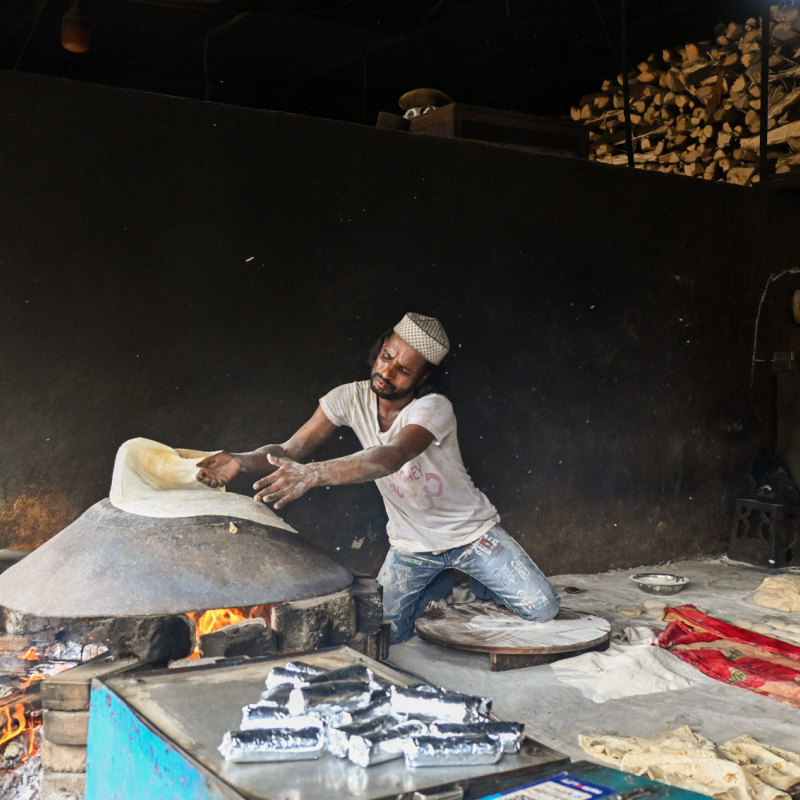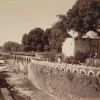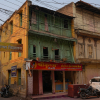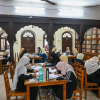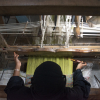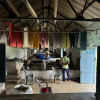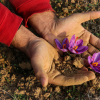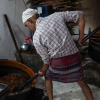Aurangabad—the name immediately conjures the caves of Ellora and Ajanta, the grand fortress city of Daulatabad. Yet, what goes unmentioned is the city’s amazing local cuisine. Nestled in the very heart of India and on the Deccan Plateau, it’s a city that has been at the crossroads of trade and business for at least the last 2,000 years. Its people are hardy and so are its crops, and Aurangabad is one of India’s hidden culinary gems. The thousands of daily tourists who come to explore its rich built heritage often miss out on the gastronomic heritage of the city.
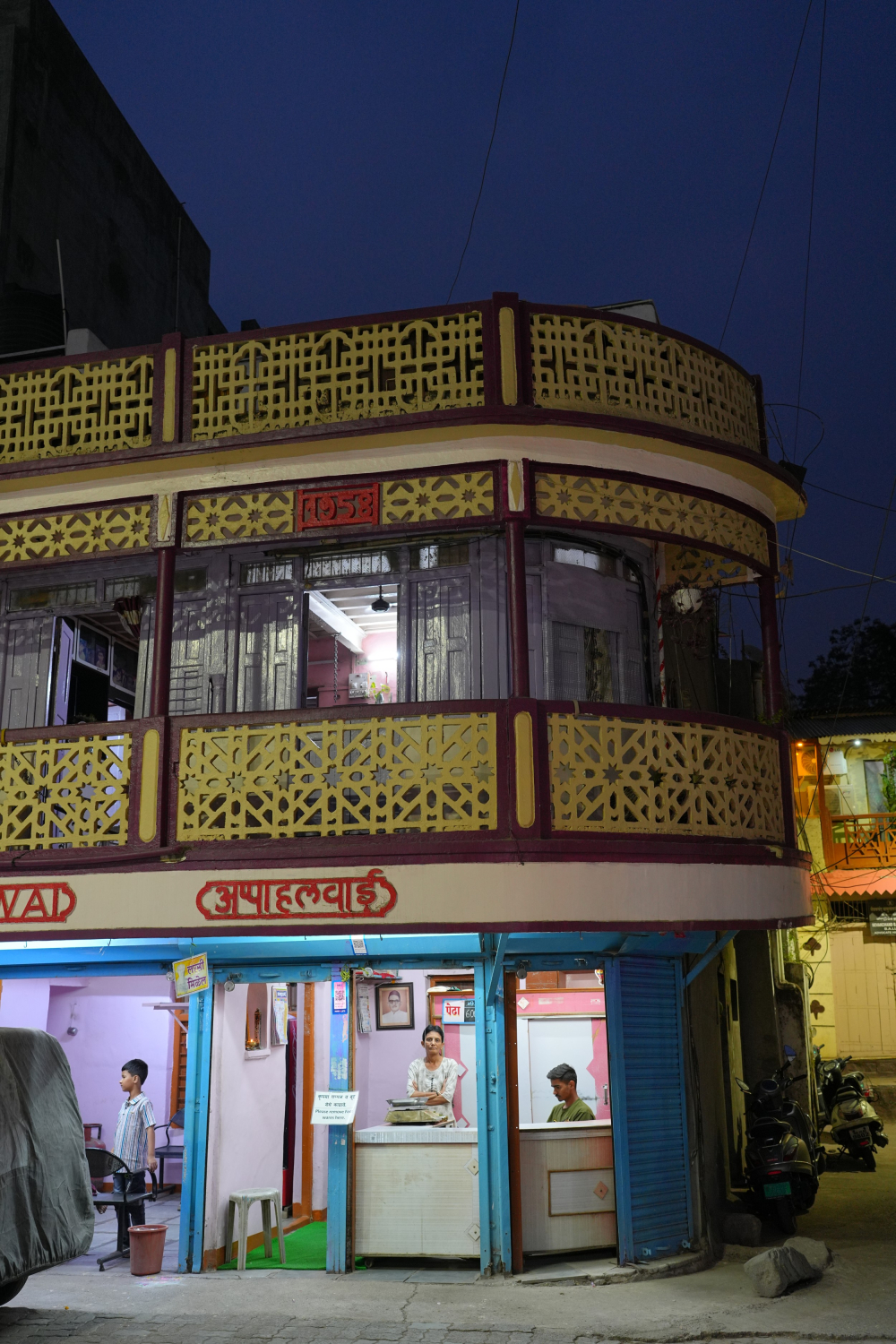
Appa Halwai selling sweets for 100 years. They are especially famous for their Pedha. (Picture Credits: Rushikesh Hoshing)
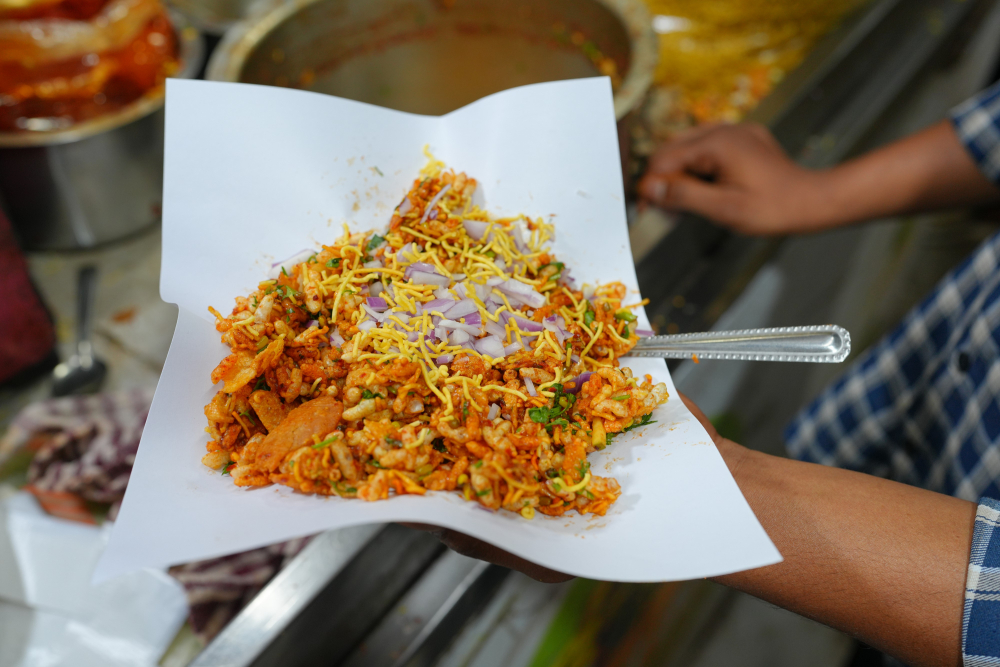
Bhel served on paper at a street stall. (Picture Credits: Rushikesh Hoshing)
Aurangabad was founded in 1610 by Malik Ambar and subsequently ruled by a succession of dynasties—from the Ahmadnagar Sultanate to the Mughals and Marathas—but its historical significance stretches far beyond it. The city and its surrounding areas, including Daulatabad, have been pivotal to numerous dynasties throughout Indian history. It held importance for the Rashtrakutas and served as the capital of the Yadavas, the city then named Deogiri. It was also part of the Khalji Empire and was briefly the capital of India during Muhammad bin Tughlaq’s reign. Its name, Aurangabad, is credited to the Mughal Emperor Aurangzeb. Following the Mughal era, the region became a significant territory within the domains of the Nizams of Hyderabad, remaining so until 1948, when it became part of the newly independent Indian nation.
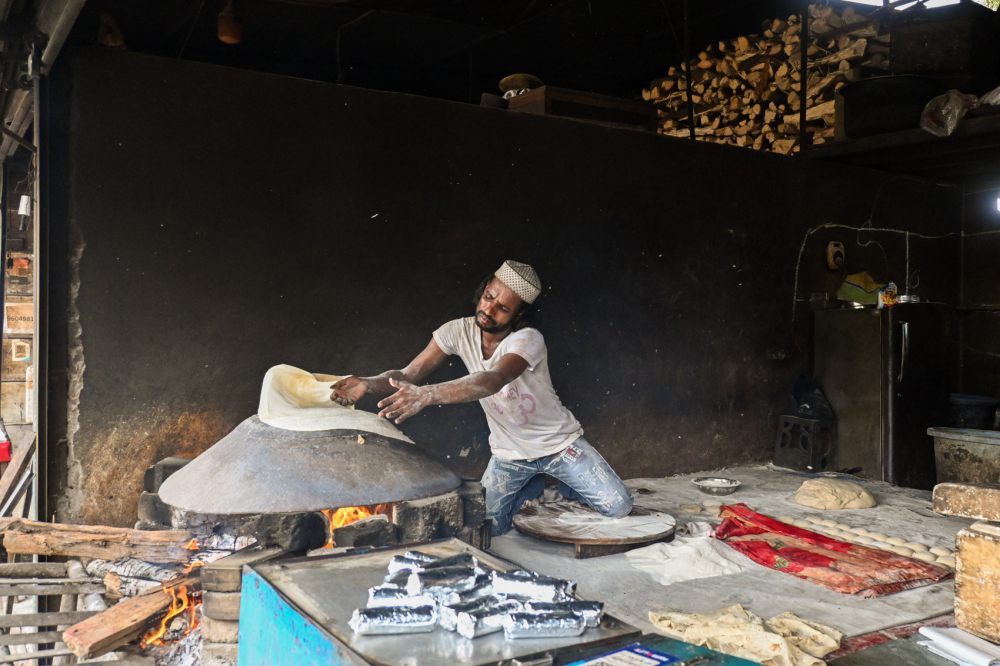
Preparing roomali roti. (Picture Credits: Anil Purohit)
This succession of dynasties has left an indelible mark on the city’s culinary landscape, with each ruler contributing to the city’s rich culinary traditions. Perhaps no other dish better exemplifies this than the gosht qaliya and naan. If there is one dish that shouldn’t be missed, it is this! The bhatiyaras (caterers) and khansamahs (cooks) who prepare this dish claim their recipes have remained unchanged since Mughal times. Slow cooked and infused with spices and flavour, this is a sensuous yet robust dish. Many believe that this dish evolved thanks to Muhammad bin Tughlaq’s infamous decision to move his capital from Delhi to the Deccan. Seeking to set up his seat of power literally at the geographical centre of his kingdom, he chose Aurangabad/Daulatabad as his capital, thus forcing the populace of Delhi to migrate. This dish is said to have become the sustaining meal for the people during this long, arduous journey.
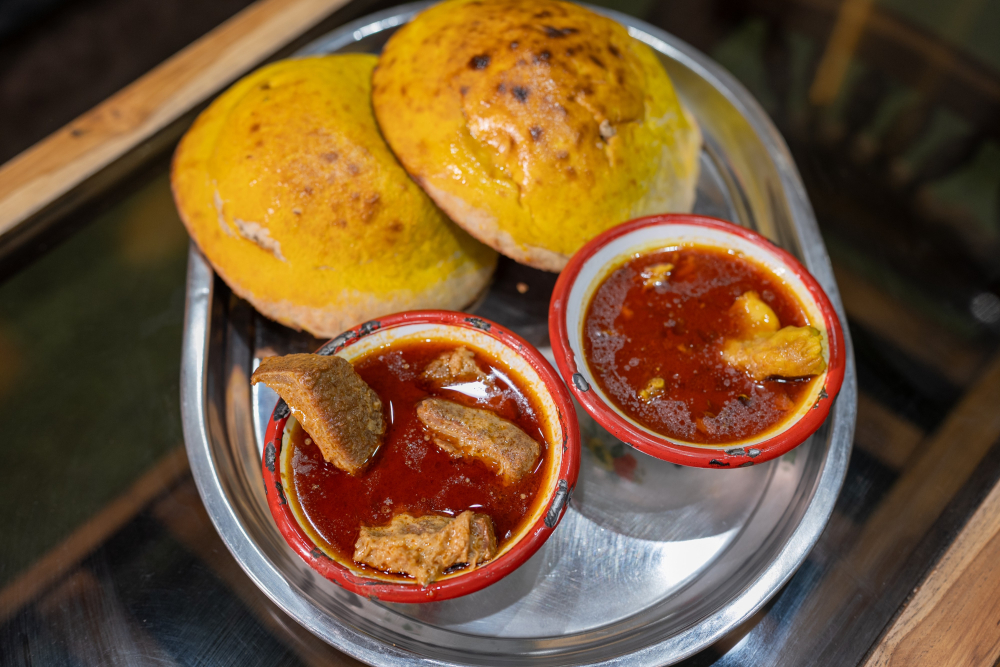
Gosht Qaliya and naan. (Picture Credits: Rushikesh Hoshing)
The qaliya is cooked in a single pot, ensuring carefully controlled heat, and brings together the best of the north and the south in its seamless flavours by combining sesame seeds, poppy seeds, coconut and exotic spices like Marking Nuts. Cubes of meat are gently simmered, allowing them to absorb the complex spice mixture and the heat from the chillies. In many places, the vessel in which the qaliya is made is enclosed in a brick chamber, essentially creating an ‘underground’ oven. The resultant slow-cooked meat is a true gastronomic delight. The naan can be a simple flatbread (made using flour, water and salt) or a more exotic variation made using milk, honey and dried fruits. There is a qaliya and naan to suit all pockets and palates.
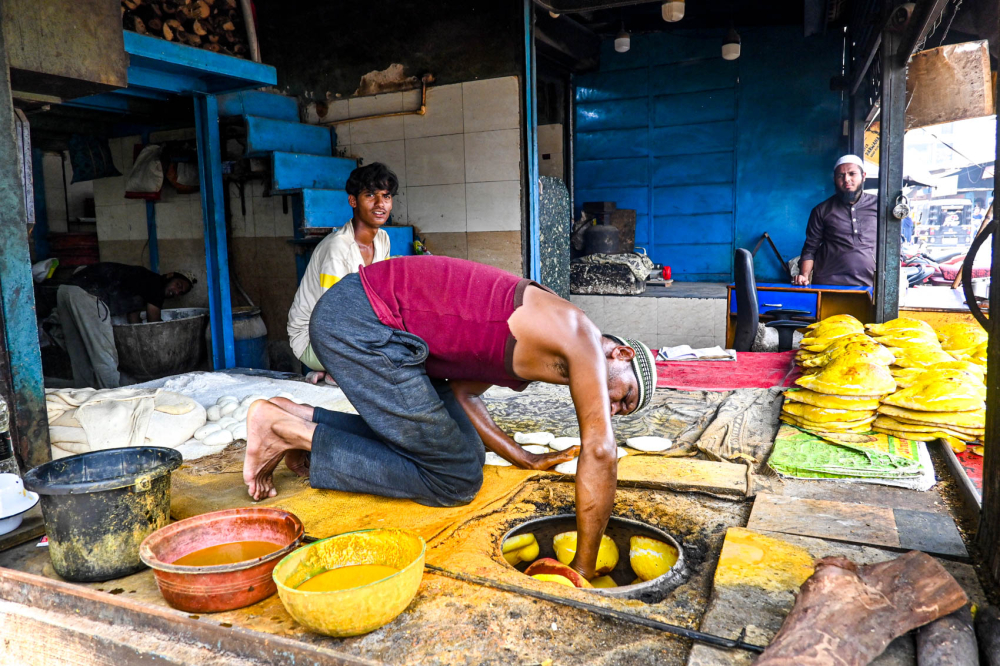
Placing naan in the oven. (Picture Credits: Anil Purohit)
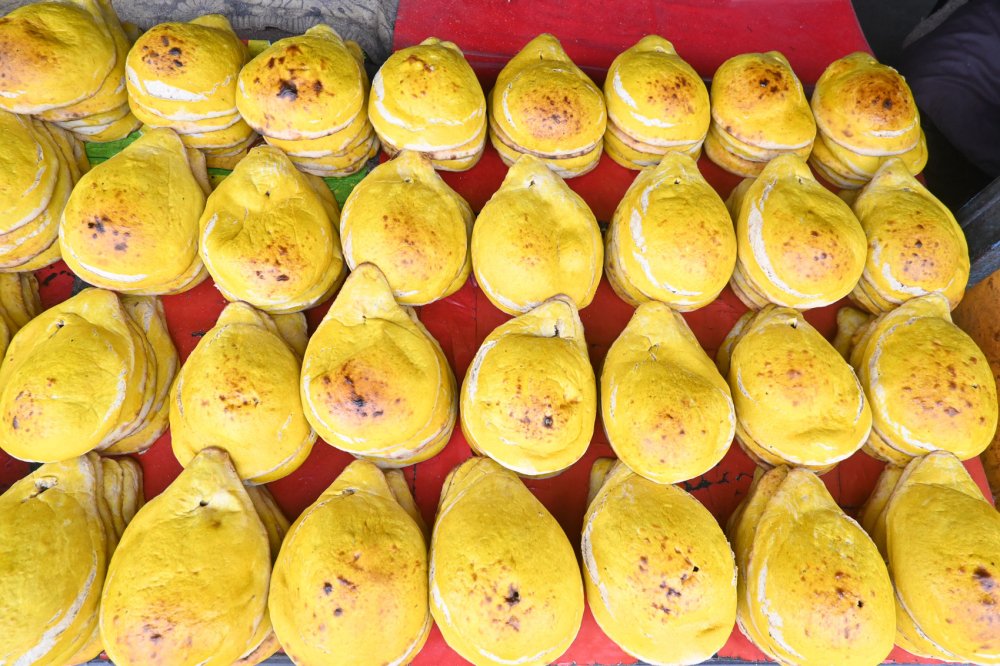
Naan arranged in neat rows in front of the shop. (Picture Credits: Anil Purohit)
But that’s not all. Aurangabad is also known for its hot mawa jalebis, a sweet delicacy that can be enjoyed on its own or paired with thick cold rabdi for an indulgent treat. Other local specialties include manda, a paper-thin flatbread, and kebabs of all kinds. Aurangabad’s khau-galli (food street) is dotted with hidden gems, with small shops serving up the most delectable kebabs and desserts.
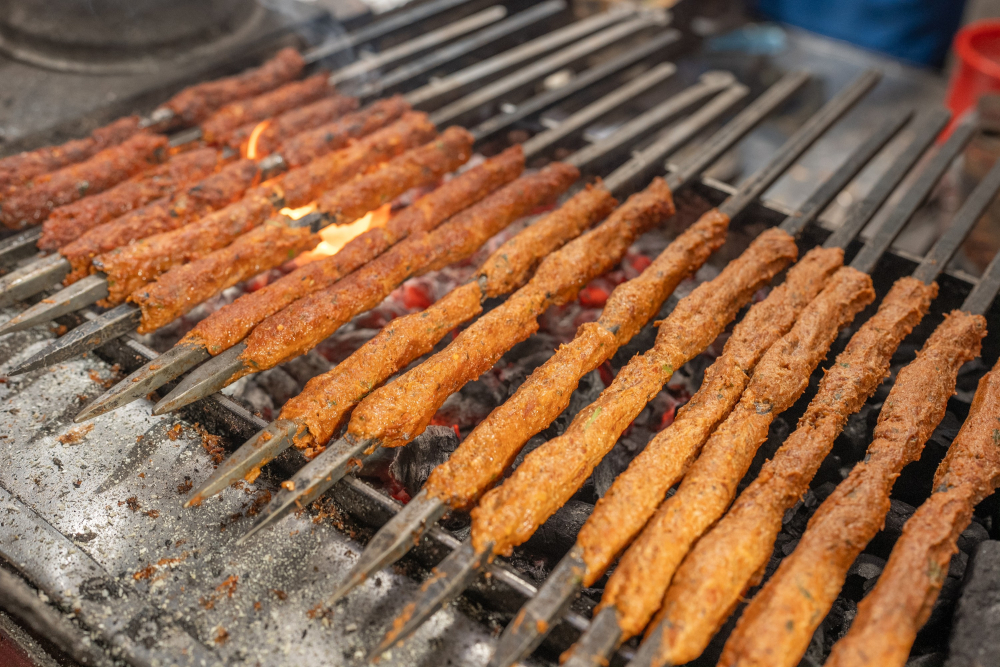
Seekh Kebabs being grilled at a stall. (Picture Credits: Rushikesh Hoshing)
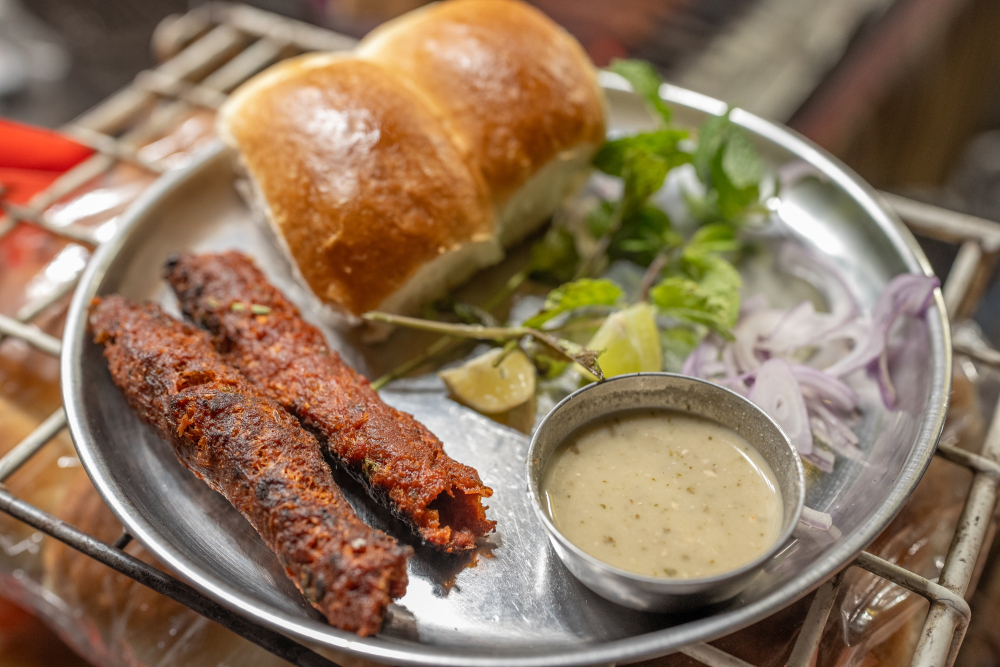
Seekh kebab served with pav. (Picture Credits: Rushikesh Hoshing)
Breakfasts are a hearty affair, often featuring brain and offal presentations. Kheema is another perennial favourite, typically garnished with boiled eggs—a ubiquitous ingredient in Aurangabadi cuisines. During monsoons and winters, locals turn to paya (trotter) soup, considered a hearty restorative meal or a tonic to start the day.
The Maharashtrian influence in Aurnagabad’s cuisine is, of course, undeniable. Classic dishes such as poha, missal, vada and sabudana are all present and accounted for, with Marathwada’s signature spicy kick. This fiery flavour is often offset with a ghee-laden sweet sheera. A lesser-known gem is the simple Maharashtrian bhojanalaya (eating house). These unassuming eateries serve a ‘fixed’ meal of a small selection of gravies and a dal with rice and hot millet flatbreads. Marathwada’s traditional grains—jowar, bajra and nachni (or ragi)—are perfectly suited to the region’s arid climate, requiring less water and fertiliser. These hardy grains not only sustain local farmers but also offer a healthy alternative to typical grain options. A local specialty worth noting is the pathri, a flatbread made from rice flour, often paired with spicy gravies.
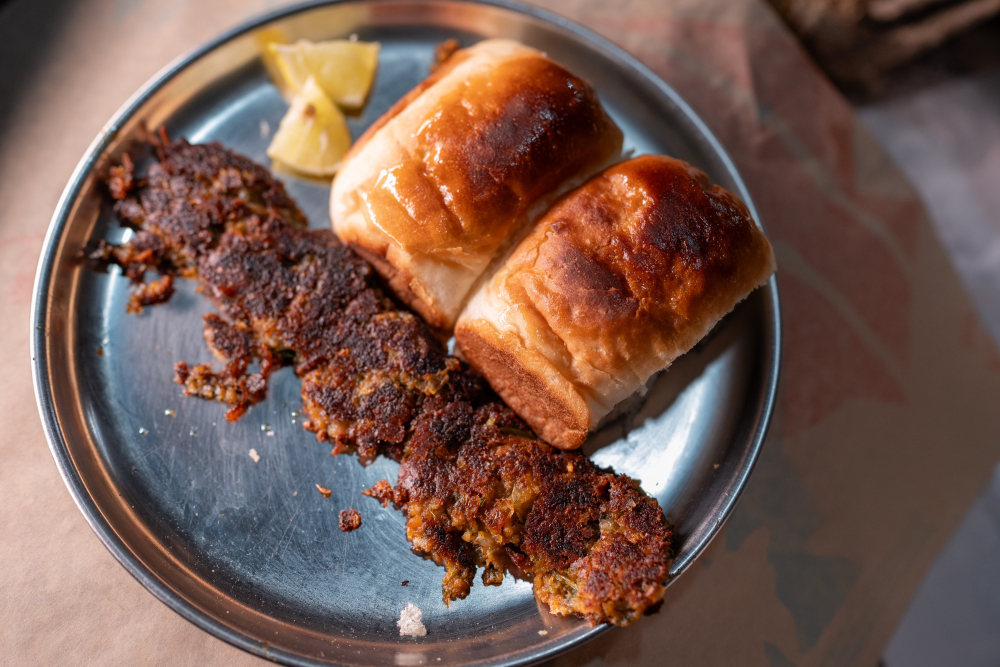
Tikkiya-pau. (Picture Credits: Rushikesh Hoshing)
Evenings in Aurangabad are incomplete without tikkiya-pau—the city’s answer to all the hero snacks of the other Indian cities. Minced lamb is marinated with chillies and spices, pounded into submission and then rolled into small balls, which are then flattened on a hot tava and griddle fried to crisp perfection. The tikkiya is then stuffed into a pau (reminiscent of Mumbai’s laadi pau) and served with a spicy green thecha-like chutney and chopped onions. Boiled eggs as a sidekick are always optional. For vegetarians there is the poha-tarri-samosa. A unique concoction of a potato-filled samosa smashed into a plate, covered in a spicy flattened rice pulao and then drowned in an even spicier and mouthwatering tarri (thin gravy). Variants include substituting the samosa with a a batatawada (mashed potato coated in batter and deep fried). The city also offers a diverse range of dining options for main meals, from modest eateries to upscale restaurants, all serving thalis with all the trimmings.
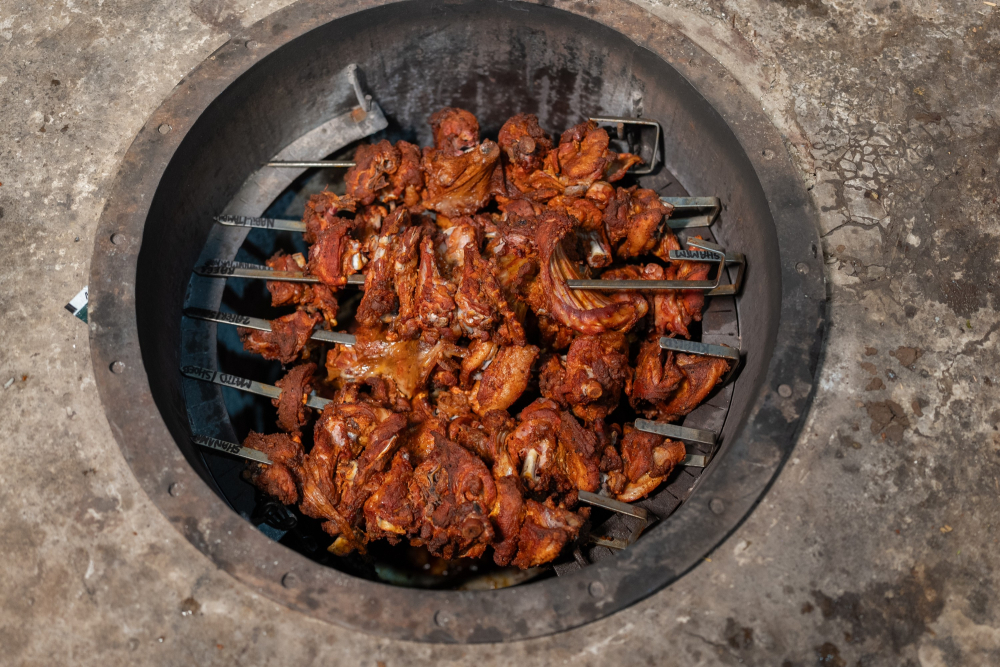
Meat cooked in a silo to prepare Aurangabadi mandi at Zama Khan’s eatery. (Picture Credits: Rushikesh Hoshing)
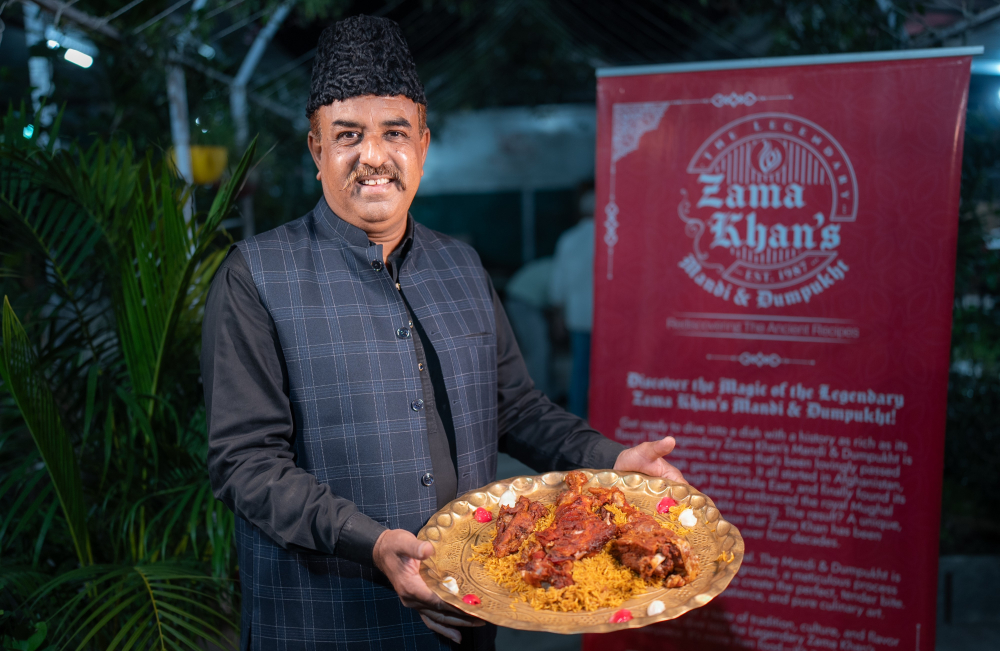
Aurangabadi mandi served at Zama Khan’s, an eatery operating since 1987. (Picture Credits: Rushikesh Hoshing)
But perhaps something that is least known to outsiders is the Aurangabadi mandi. This super slow-cooked meat dish arrived in Marathwada from across the Arabian Sea with the Yemeni soldiers in the service of the Islamic armies, especially those of the Nizams of Hyderabad. The meat is spiced and marinated and then slow cooked while suspended in a sealed tubular underground silo. The lifting out of the meat is a spectacle in itself. As it cooks, the meat drippings are collected in a bowl at the base and served alongside the meat. When served, the meat is so tender it falls off the bone as it’s shaken onto the plate! It is typically served with rice and/or naan. Surprisingly, the chefs in the city also developed a chicken version of mandi, which is equally delicious, though purists may raise eyebrows.
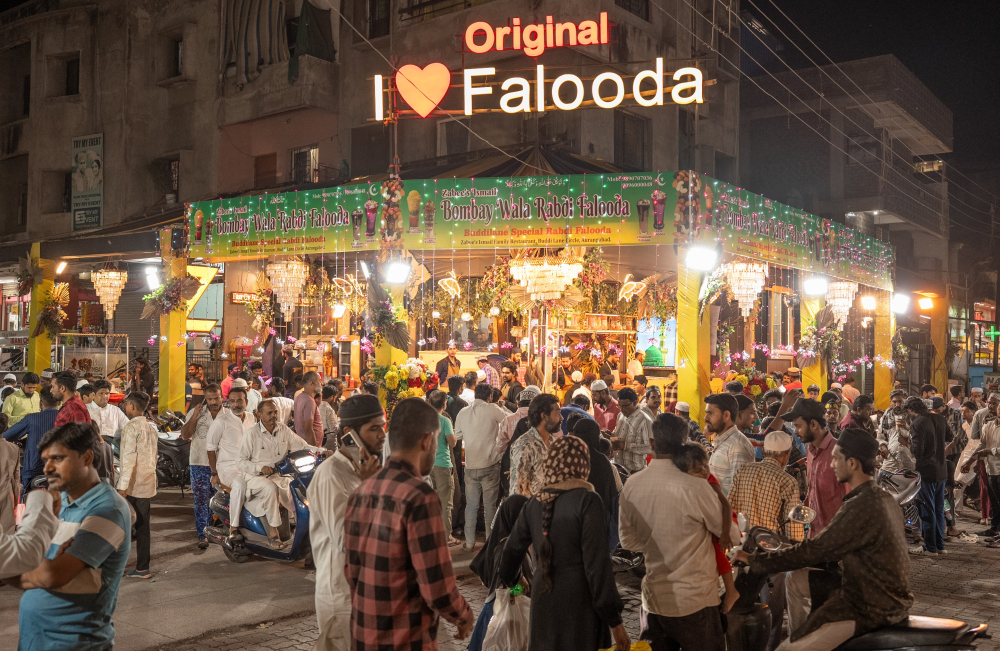
Crowd outside a falooda stall. (Picture Credits: Rushikesh Hoshing)
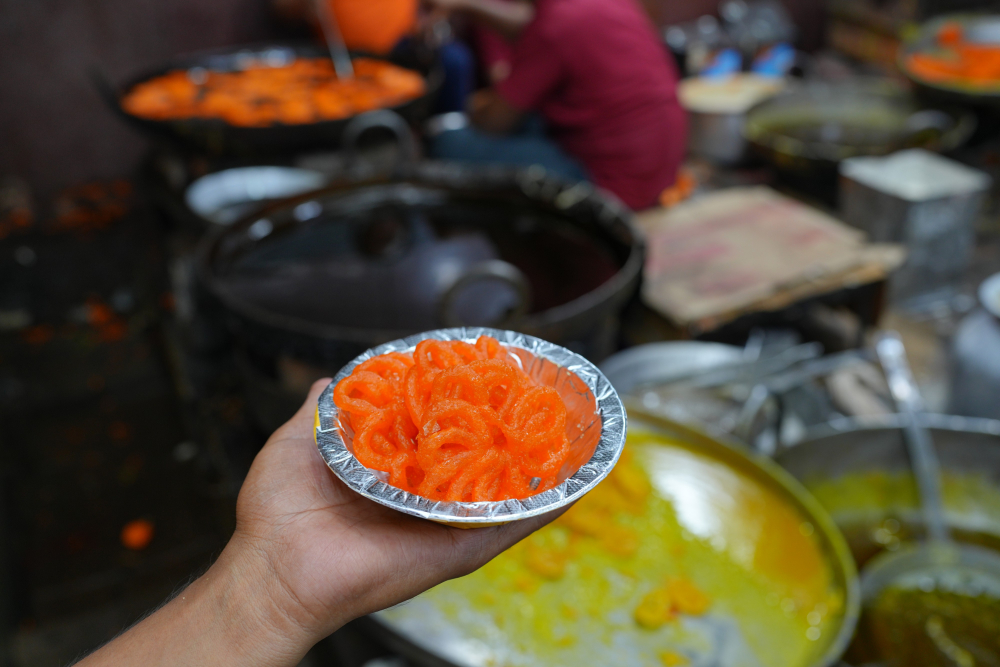
Mawa Jalebis at Uttam Halwai. (Picture Credits: Rushikesh Hoshing)
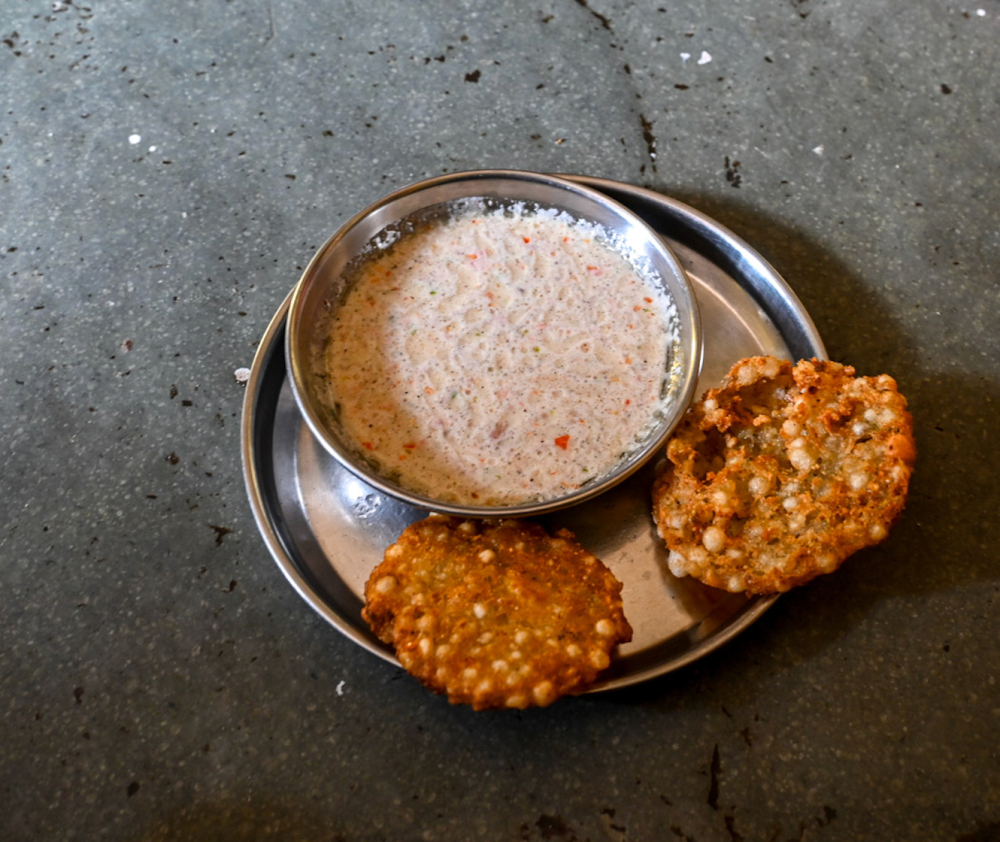
Sabudana vada. (Picture Credits: Anil Purohit)
For those who appreciate the robust, earthy flavours of Marathwada and enjoy meat, bread and kebabs, the region is an unmissable gastronomic destination. The culinary landscape of Aurangabad is rich with cross-cultural influences and offers a unique blend of traditional techniques and innovative adaptations, making it a haven for food enthusiasts seeking authentic and diverse flavours.
This essay has been created as part of Sahapedia's My City My Heritage project, supported by the InterGlobe Foundation (IGF).
